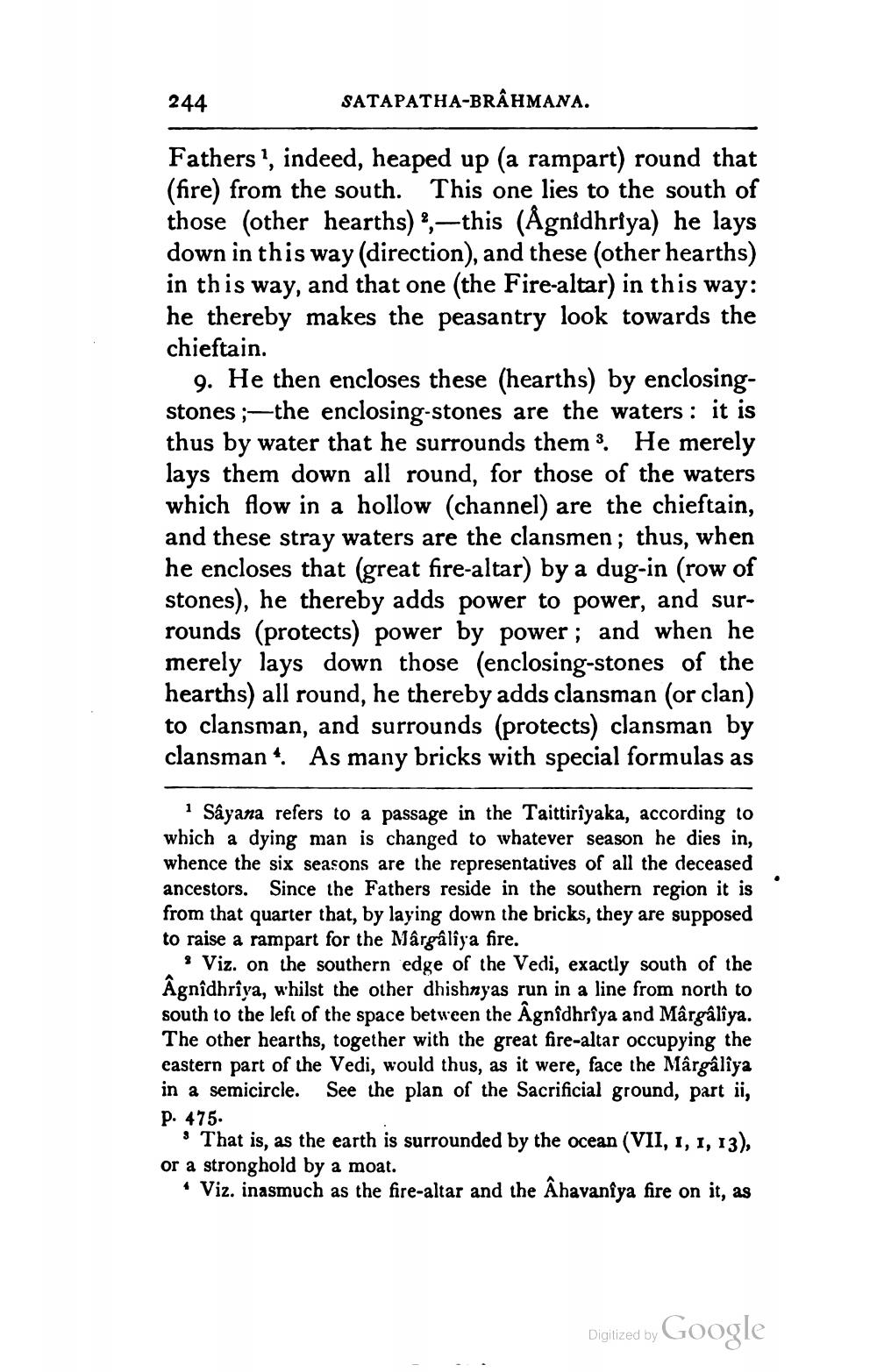________________
244
SATAPATHA-BRAHMANA.
Fathers”, indeed, heaped up (a rampart) round that (fire) from the south. This one lies to the south of those (other hearths) ,—this (Agnidhriya) he lays down in this way (direction), and these (other hearths) in this way, and that one (the Fire-altar) in this way: he thereby makes the peasantry look towards the chieftain.
9. He then encloses these (hearths) by enclosingstones ;—the enclosing-stones are the waters : it is thus by water that he surrounds them? He merely lays them down all round, for those of the waters which flow in a hollow (channel) are the chieftain, and these stray waters are the clansmen; thus, when he encloses that (great fire-altar) by a dug-in (row of stones), he thereby adds power to power, and surrounds (protects) power by power; and when he merely lays down those (enclosing-stones of the hearths) all round, he thereby adds clansman (or clan) to clansman, and surrounds (protects) clansman by clansman 4. As many bricks with special formulas as
Sâyana refers to a passage in the Taittirîyaka, according to which a dying man is changed to whatever season he dies in, whence the six seasons are the representatives of all the deceased ancestors. Since the Fathers reside in the southern region it is from that quarter that, by laying down the bricks, they are supposed to raise a rampart for the Mârgâlîya fire.
3 Viz. on the southern edge of the Vedi, exactly south of the Agnidhriva, whilst the other dhishnyas run in a line from north to south to the left of the space between the Agnidhrîya and Mârgâlîya. The other hearths, together with the great fire-altar occupying the eastern part of the Vedi, would thus, as it were, face the Mârgâlîya in a semicircle. See the plan of the Sacrificial ground, part ii, p. 475.
. That is, as the earth is surrounded by the ocean (VII, 1, 1, 13), or a stronghold by a moat.
· Viz. inasmuch as the fire-altar and the Ahavaniya fire on it, as
Digitized by Google




